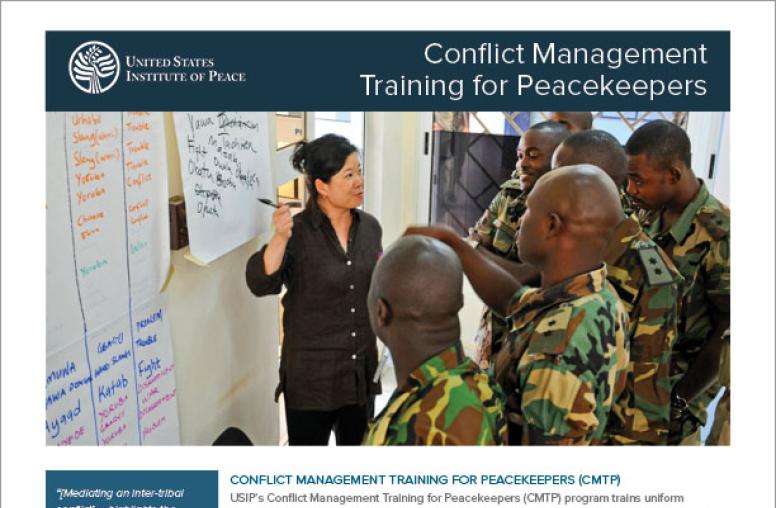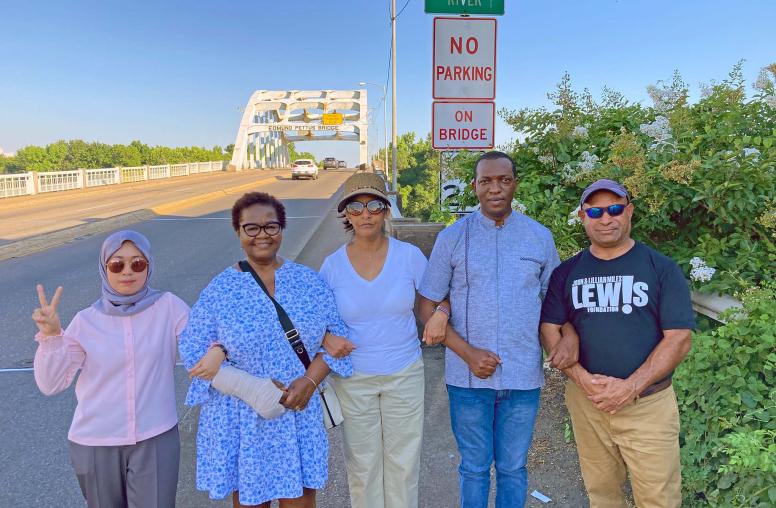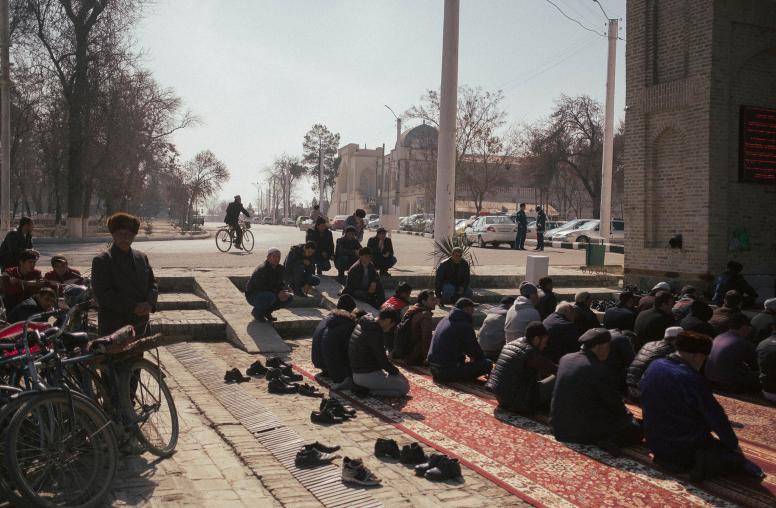If You Want Peace, You Have to Plan for It
How the world is training the next generation of peacemakers.
Sept. 21 will mark the annual observation of the International Day of Peace, established by the United Nations General Assembly in 1981 to commemorate and strengthen the ideals of peace and to focus attention on the purpose of promoting peace by the world community. Marking a day of peace may seem idealistic especially against the grim parade of recent events, but to the contrary, its inspiration is decidedly pragmatic: If we do not take peace seriously enough to plan for it and to develop informed strategies to achieve it, it will only grow more elusive.

On this day each year, people around the world engage in educational and cultural activities focused on peace as the original U.N. resolution had urged. Thirty years ago, events on college campuses and in local communities attracted those who already considered themselves advocates for peace. Today, social media enhances the opportunity to involve greater numbers of people, especially young people, in marking this day -- sharing information, organizing activities, and encouraging action on global issues. Most significantly, it serves as a rallying cry for the next generation: The problems that fuel the world's conflicts will only be solved through creative thinking and committed action, including by the young people whose own futures are at stake.
The growing threat posed by global violence can easily lead to a sense of disempowerment and despair. Hot wars are raging in Afghanistan, Iraq, Syria, Libya, South Sudan, and even in Europe, in Ukraine. Violent extremism is spreading in Nigeria, across the Sahel and in the Horn of Africa. Violence is driving illegal immigration from Central America across the United States' borders. These conflicts are taking a devastating human toll and posing an increasingly dangerous threat to a range of U.S. national interests -- from economic growth to counterterrorism, from human rights to global health. Quite simply, violence has the capacity to undermine every major foreign policy objective the United States and its allies seek to achieve. The challenge of building peace is an urgent one, and disengagement is not an option.
In most of these conflict situations, young people bear the brunt of the horrors. In some places a generation is growing up without access to education, basic health care, or even clean water. Violence is shaping every aspect of the existence of far too many young men and women. In countries such as Chad, the Democratic Republic of Congo, and Myanmar, young people are being recruited or conscripted as aggressors. But in more instances than many are aware, young people are leading efforts to make change and are taking important steps -- and taking personal risks -- to build peace in their societies.
Far from the headlines, media initiatives like Salam Shabab in Iraq and Sawa Shabab in South Sudan, use television and radio programming and online outreach to engage youth and develop their peacebuilding knowledge and skills. In Afghanistan earlier this year, activists organized a rap video contest to invite youth to participate in promoting a peaceful national election. These are just a few examples of the work that our colleagues at the U.S. Institute of Peace (USIP), its partner organizations, and many others support around the world, because we understand that youth have a vital voice and a powerful motivation. For many youth living in conflict zones, peace is neither abstract nor quixotic; it is a matter of life or death.
For a younger generation here in the United States, peace matters in their schools and communities, but global conflicts, too, are a very real concern. Teenagers in this country have grown up in the post-9/11 era -- they have only known a world in which the U.S. has been fighting and sustaining casualties in major overseas wars. That reality is their entire frame of reference, and for many this is personal: they have parents or relatives or friends who have served in these campaigns. For others, the 24-hour news cycle and the power of social media have brought a steady stream of information on global conflicts closer to home.
Young people also need to understand the possibility of resolving conflicts through non-violent means. They need to know that tools exist to prevent and manage conflict -- tools such as facilitation, mediation, negotiation, and more. They need to hear that this work is happening around the world, behind the scenes, even in the toughest contexts. And they need to see that it is being carried out in many cases by their peers in the conflict zones themselves; that young people have a unique capacity to contribute to peacebuilding, and that their engagement matters.
There are times when the use or threat of force is also required for peace. And there are groups like the Islamic State that respect no other currency. But the use of force is prominently covered by the media and well understood by today's young people. An understanding of the power of nonviolent methods of conflict management is now what is lacking.
This is why USIP educates younger audiences in the U.S. on precisely these points through the Global Peacebuilding Center and its toolkit for educators; indeed, the original act that created this organization emphasized the importance of such public education. Equipped with information, empowered with skills, and inspired to act, young people are creating Peace Clubs in their schools -- motivated not by an allegiance to a utopian ideal, but out of a pragmatic desire to tackle real problems at the local and the global level; they are using social media to design awareness campaigns on issues they care about and mobilize their peers; they are taking the initiative to educate even younger students about international topics in the headlines of the evening news.
As the trend toward greater global violence looms large, this Day of Peace reminds us why working for peace matters, and why it's essential to include young people. Ultimately, it is the next generation of peacebuilders who will shape the future of U.S. global engagement and who will lead the search for practical, nonviolent solutions in a dangerous world.
Reposted with permission from ForeignPolicy.com, Source: “If You Want Peace, You Have to Plan for It"



